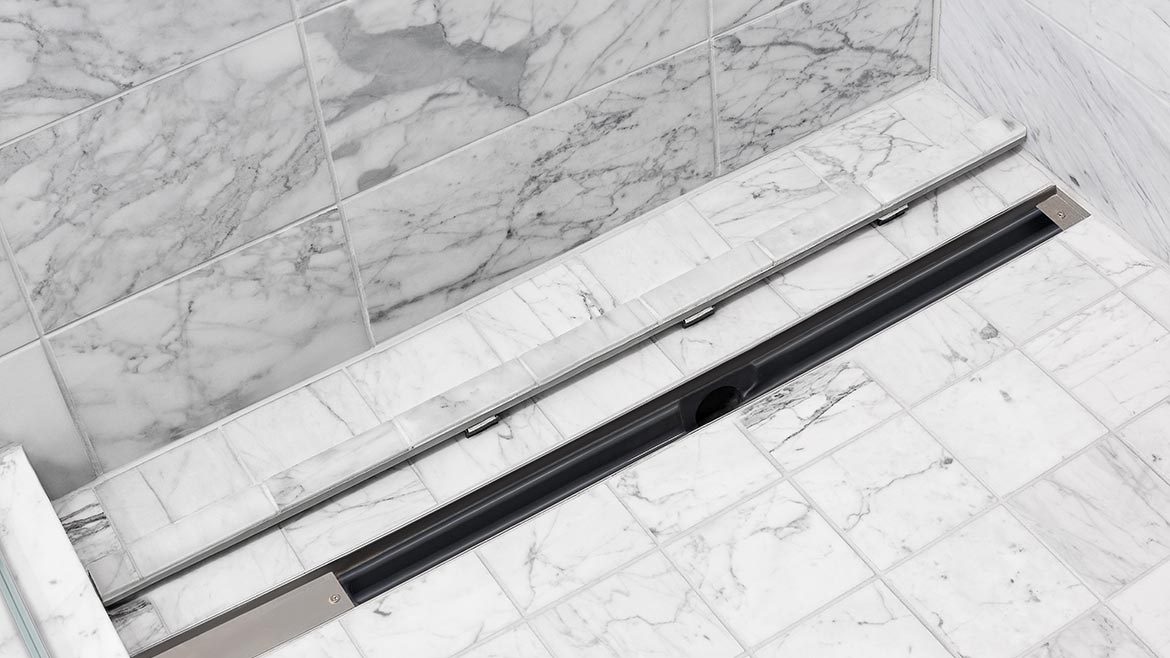
An original ad for Armstrong's linoleum flooring, back when the company was still primarily known for its cork products.

Marmorette linoleum from Armstrong is one of the product lines featuring the new Color Continuum system.
As part of its 100th anniversary, Armstrong recently rolled out Granette, aimed at offering a nature-inspired visual that is different than the typical “marbleized” appearance of linoleum.
“Granette really pushes into a natural, organic palette, with a very linear, striated-type visual,” says Laura Gemperline, design manager, product styling & design for Armstrong. “There are lots of requests for these types of visuals – when customers want a warm, wood-like feel.”
Granette, like the rest of the company’s linoleum line, has also been organized to use Armstrong’s new Color Continuum color system. The system organizes the colors into light, medium, and dark tone steps. “This allows our products to coordinate with other materials and finishes,” Gemperline notes.
Dominic Rice, Armstrong vp, commercial resilient product management, says Armstrong will also start applying the Color Continuum program to commercial products outside of its linoleum range. “Right now, Color Continuum’s biggest representation is in our primary linoleum product line Marmorette,” he says. “We are applying the same rationale and structure to Granette, and it’s also a color structure we’re applying to pretty much all of our commercial product lines.”
The astonishing thing about linoleum, according to Rice, is that despite advances in design and finish technology the product has remained fundamentally unchanged in 100 years. “It is the same product as it was then, made from recycled materials and sustainable content,” he says. “And the product is as relevant today to customers as it was back then.”
One of the key selling points of the product is its green composition, Rice says. The key raw material used in linoleum also helps give the product its name: linseed oil, a liquid which is derived from rapidly renewable flax plants. Jute, another renewable resource found in linoleum, is a fibrous plant material used in the flooring’s backing. Linoleum also contains recycled materials in the form of cork (repurposed from the waste created in making bottle stoppers) and wood flour (commonly known as sawdust).
“Linoleum is a great representative example of Armstrong’s long-term commitment to sustainability,” Rice notes. “Before Armstrong began manufacturing linoleum in 1909, it was primarily producing cork bottle stoppers. A lot of waste cork was generated, and the company looked at ways to utilize what would otherwise be scrap material. One of the key raw materials in linoleum is cork, and Armstrong had a ready and available source of the material,” Rice says.
The company manufactured linoleum until 1974, when it ceased production to concentrate on vinyl flooring. In the mid-‘80s, the category began seeing a resurgence in Europe. “That return in the popularity of linoleum extended into the U.S. and Armstrong reentered the linoleum business in 1998,” Rice notes. The product’s market also shifted in that time. While in the ‘20s and ‘30s linoleum was not uncommon in the home, today the product is much more associated with commercial applications.
“These floors are durable – they can last for 40 years if they’re properly maintained,” Rice says. “While I don’t know of any homes that have linoleum from 1909 still in place, you can find homes built between the ‘20s and ‘40s that still have original linoleum installations in service.”–Michael Chmielecki



